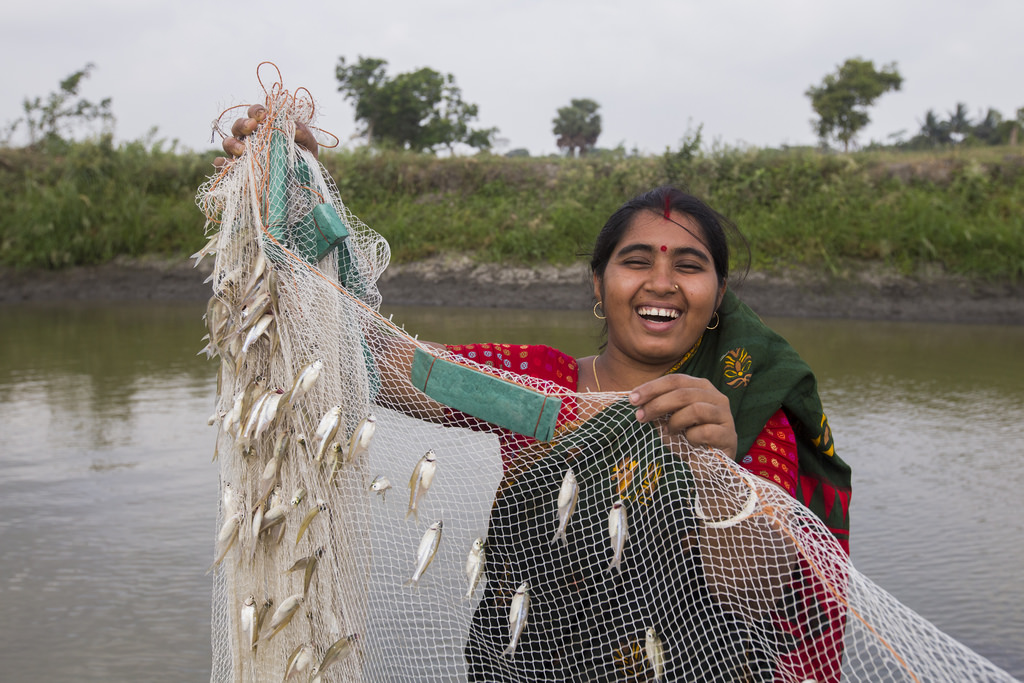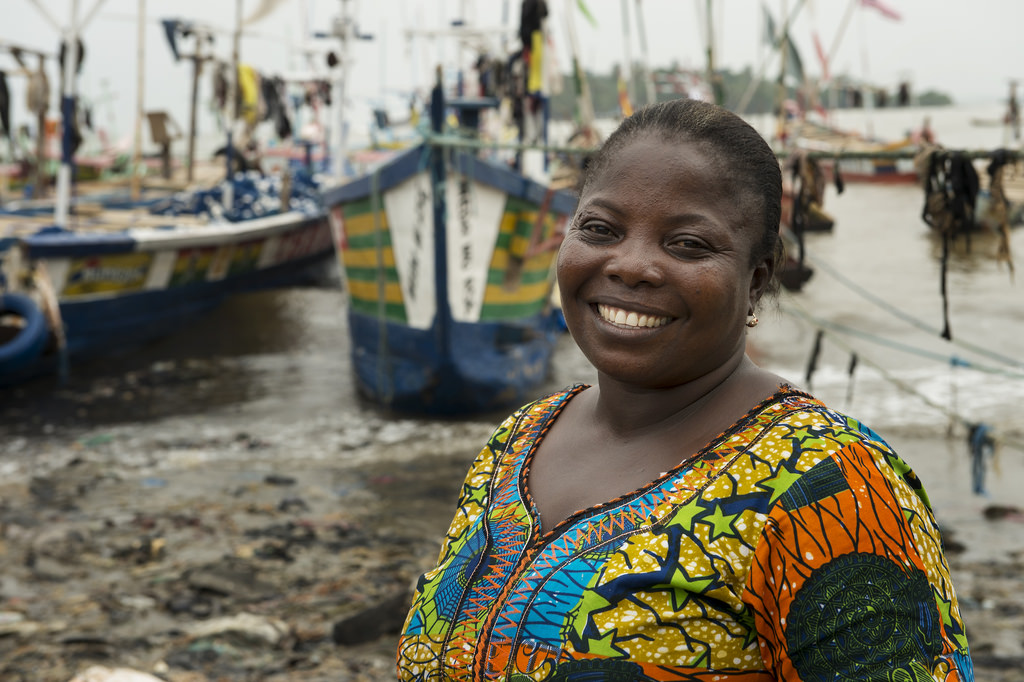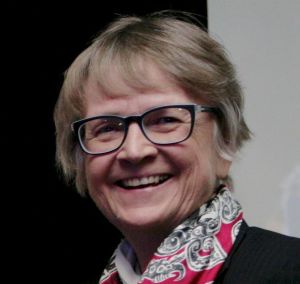

Opinion: 4 revolutionary tips to stop aquaculture and fisheries ignoring, resisting or eroding gender equality
April 26, 2019
By Meryl Williams, Chair, Gender in Aquaculture and Fisheries Section of the Asian Fisheries Society
To coincide with the “Seeds of Change: Gender Equality Through Agricultural Research for Development”, being hosted by Australian Centre for International Agricultural Research, CGIAR Collaborative Platform for Gender Research and University of Canberra on 2-4 April, Dr Meryl Williams has penned this opinion piece around her four revolutionary tips that can energise the aquaculture and fisheries system for a change to gender equality.
In my years in fisheries research in Australia, few researchers were women, all fishers were assumed to be men, “girly” calendars were occasionally pinned on the office, lab or tea room wall at work and the workplace rules of engagement for women were still being worked out by trial and error. I vividly remember when my colleague, “Jessie”, the only woman technician in our research agency, was assigned to go into the field for a week to support a fish tagging project run by men scientists. The men took umbrage and went to the Union to protest this affront to their work conditions. The Union warned them that they could be sacked for discriminating against a woman. So change was at hand – or so it seemed.
Over the last four decades, I discovered that some change is very slow, while other change can be very rapid. In fisheries and aquaculture, international gender research has revealed that gender equality is progressing slowly, and may even be resisted or eroding, but many other changes in the sector have transformed fishing and aquaculture and the seafood value chain beyond recognition. Unfortunately, many sectoral changes resulting from global drivers favouring international trade, more efficient production, the Blue Economy, even sustainability, have contributed to gender equality being ignored, resisted or eroded. The resistance is abetted by cultural norms favouring men with the means to amass and control capital assets for producing and processing fish.
Where does this place the women? In our 2019 International Women’s Day OpEd1, eight colleagues and I said that the seafood industry is women intensive but male dominated. Women workers are over-represented in low skilled, low paid, low valued positions while men dominate the power positions. From the poor quality global statistics available, women are 15% of the primary production workers but rising to 20% in activities in inland water fisheries. Women dominate in the labour intensive processing industry, perhaps reaching 85% to 90% of the total processing workforce. Sex-disaggregated statistics for aquaculture, that now produces more than half of the fish we eat directly, are poorer than those for fisheries. Women aquaculture workers represent a lower share of the workforce in larger, more capital intensive and offshore operations. The top end of the workforce in fisheries and aquaculture is the realm of men, with 99% CEOs, 90% board members and leaders of professional organizations.

A woman with fish caught using gill net in Bangladesh. Photo by Md. Masudur Rahaman/WorldFish.
International research into gender in aquaculture and fisheries has been fundamental in revealing the detail of the inequality women experience in seafood value chains. For more than 28 years, my colleagues and I in the Gender in Aquaculture and Fisheries Section and partner organisations have examined the depth of gender inequality and its impacts on women in studies, conferences and publications2. We have revealed the dearth of sex-disaggregated data, lack of time series to show trends and make comparisons, started to sketch the sectoral and economy-wide settings that exacerbate inequality, and experimented with creating gender transformative change in communities.
This leaves us knowing that positive change is not going to happen quickly but also realising that we have to stimulate the climate for positive change before other forces take over. From our collective experience, therefore, we found four revolutionary tips that can energise the system for a change to gender equality.
First, women need to work together for their rights. Rights will not otherwise be simply handed over on a plate. Women will need to challenge their current status – in their jobs, businesses or company positions. They must communicate what they need, in a manner effective for their work and national cultures. Women working together must not allow themselves to be treated as second class. Nor should they emulate men in their power relations at work, for example, by keeping other women and men in their secondary places. High profile cases have shown that some powerful women in the fishing sector have exploited the workers for the same personal benefits as do men in power.
Second, gender experts have an ongoing job advocating why equality matters, and how. They have a duty to raise the level of comprehension of their fellow professionals on why gender equality is important to the industry. Most importantly, this advocacy is not done once-only but requires agitating at every opportunity. We have to become the “squeaky wheel” that needs attention.

Portrait of Mrs Emelia Abaka-Edu in front of her boat in Axim village, Ghana. Photo by Anna Fawcus/WorldFish.
Third, training and capacity building are sorely needed to enable a shared gender equality vision. The capacity of current professionals to create a vision of a gender equitable industry is low and has to be raised. When asked why new fisheries policies are gender-blind, fisheries officers will often say they don’t see the importance. What would gender equality look like in my part of the world and what steps would lead to it?
Fourth and finally, a progressive environment of gender equality is not a “women only” realm but one that requires and invites men’s engagement, benefiting all in the transformation. Multiple institutions should be engaged. The exercise cannot become window dressing by dominant actors, e.g., corporations invoking corporate social responsibility for public effect, while marginalising workers representation in the workplace.
Notes
1 The OpEd, “Boosting women in seafood and ending gender inequality: A call to the seafood community – time for commitment and change is now!” was published on 10 seafood industry and specialist sites. I acknowledge my co-authors of the OpEd – Marie Christine Monfort, Natalia Briceno-Lagos, Jayne Gallagher, Leonie Noble, Editrudith Lukanga, Tamara Espiñeira, Marja Bekendam and Katia Frangoudes.
2 Conferences, publications and presentations – http://www.genderaquafish.org/events/’ “From Catch to Consumer: Why Gender Matters in Aquaculture and Fisheries”
About the author
 Meryl Williams has been working in international fisheries research for more than four decades, and focusing on gender in fisheries since the mid 1990s, helping develop the activities and organising the Gender in Aquaculture and Fisheries Section of the Asian Fisheries Society. She gratefully acknowledges Dr M.V. Gupta (2005 winner of the World Food Prize) and the late Dr M.C. Nandeesha, two men who greatly influenced her interest in gender in the fisheries sector. In 2015, she was awarded the Crawford Medal for her work in international agricultural research. Here’s our short photographic tribute to Meryl. She is an Honorary Life member of the Asian Fisheries Society, former Director General of the WorldFish Center and former Chair of the Commission of the Australian Centre for International Agricultural Research (ACIAR).
Meryl Williams has been working in international fisheries research for more than four decades, and focusing on gender in fisheries since the mid 1990s, helping develop the activities and organising the Gender in Aquaculture and Fisheries Section of the Asian Fisheries Society. She gratefully acknowledges Dr M.V. Gupta (2005 winner of the World Food Prize) and the late Dr M.C. Nandeesha, two men who greatly influenced her interest in gender in the fisheries sector. In 2015, she was awarded the Crawford Medal for her work in international agricultural research. Here’s our short photographic tribute to Meryl. She is an Honorary Life member of the Asian Fisheries Society, former Director General of the WorldFish Center and former Chair of the Commission of the Australian Centre for International Agricultural Research (ACIAR).




